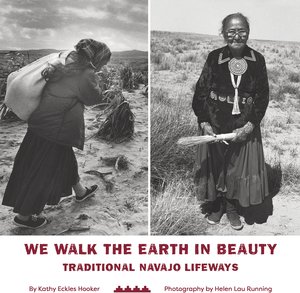
In this third edition of a work originally published in 1991, Hooker shares the pictures of Navajo photographer Helen Lau Running and adds extensive interviews and commentary of her own to a text in which the Diné people talk about their traditional ways of life (the interviewees would often demonstrate time-honored Navajo techniques for Hooker, which Running would photograph). In these pages, readers are introduced to the quotidian aspects of traditional Navajo life, from handling animals to cooking food to constructing buildings like the communal hogans at the heart of Navajo life. In every chapter, Hooker talks with older Navajo people who’ve grown up in the old cultural ways and encourages them to explain how they go about building a traditional mud oven, preparing food in the old ways, and so on, always stressing the superiority of natural ingredients like yucca or grass brush over industrialized store-bought alternatives. This connection to the natural world runs through every aspect of the book, intensified by the evocative black-and-white photos in every chapter. Hooker is adept at finding interesting people to interview, as when she talks with Hazel Nez, a weaver of Navajo rugs for over 40 years, or with the Deal family about the rhythms of sheepherding (“When we herd, we listen to the animals and do what they want to do”). The book is eye-opening for readers unfamiliar with Diné culture, though the episodic nature of the strung-together interviews can make the reading experience feel disjointed. Hooker partially compensates for this with her strong, readable prose: “On this site consisting of rocks, sand, and clay, with a few sprawling juniper trees,” she writes, “the women take their shovels and jab them into the earth; their blades clang against rock.”

